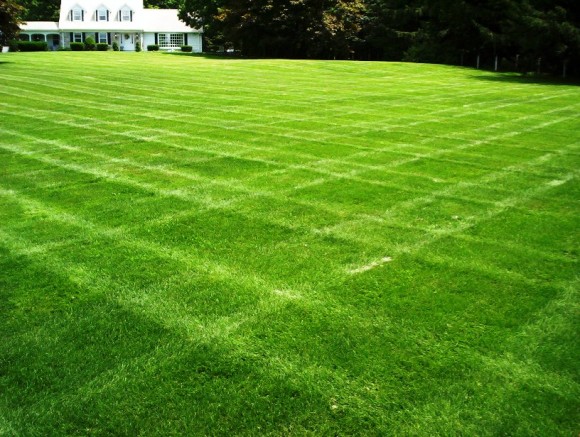
It’s that time of year again. The lawn looks dead after all you did to make it lush and verdant last year, the envy of the neighborhood. You mowed it 33 times, spent over $300 on fertilizer and pesticides, another $55 for fuel for the brand new sit-down mower you purchased, and spent $24 on Rhode Island grass seed and fertilizer to repair the bare spots. And now it looks dead …
Biologically, it is dead. The chemicals in those bags you bought last year contained chemical fertilizer with a heavy dose of nitrate plus weed killer, wide spectrum insect killer, clover killer, nematode killer, grub killer, various seed killers, etc. The soil was made barren and depends on those bags you buy to keep it barren and deadly to those natural “enemies” of your perfect lawn. The chemicals may also make your children and pets sick, as well the birds and animals that come in direct contact with that lawn.
High nitrate levels in the soil in the beach communities is the reason the DEEP is issuing pollution abatement orders and ordering sewers, yet that bag of fertilizer you spread on your lawn four or more times last season probably contained 30% or more of nitrates. Actually, only about five percent of that nitrate can be used by the grass. The rest seeps into the ground (eventually into your well) or is washed away into the nearest water body, where it does some more killing of a wide range of aquatic life.
The Old Lyme Conservation Commission opposes the use of pesticides in general as a hazard to the health of the community, especially our children. We oppose the use of chemical treatment of lawns specifically and recommend the organic approach instead. Here is what we specifically recommend:
- Reduce the size of your lawn by planting perennial gardens and shrubs instead.
- Get a soil test to determine what, if any, additives your soil needs to grow grass. Email UConn for more info.
- Buy the perennial grass seed that is best suited for each part of your property. Add clover seed to the mix as clover provides nitrogen to the grass roots.
- Compost your leaves, grass clippings, etc. and use the rich soil produced as top dressing for the lawn and garden.
- Water deeply once a week. Install rain barrels to supply added water for the lawn.
- Seek professional advice from organic experts when confronted with specific insect and weed problems.
- Raise the cutting bar on your mower to three inches. A one inch cut exposes the grass to drying out and dying. Leaving the grass clippings on the lawn provides most of the nitrogen the grass needs or save the bag of clippings for the compost pile.
Note: A new state law (12-155) that prohibits the use of a fertilizer containing phosphorous near water bodies is now in effect. A $500 fine is imposed on violators. A pound of phosphorous fertilizer can produce 10,000 pounds of algae in water bodies like Rogers Lake.
I hope everyone who reads this does their very best to follow Goerge James’ simple directions. None of us in the USA can possibly attain the close clipped “lawns” of England – the climate simply will not allow us to do so.There are many beautiful trees and shrubs and perennials that require very little fertilizer or maintenance that can beautify your outdoor spaces and reduce the grass areas. In addition they will attract more beneficial insects and birds for your enjoyment.